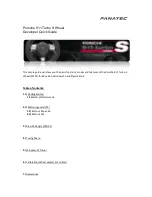
Tires
Tire Rotation
When shopping for replacement
tires, you may find that some tires
are "directional." This means they
are designed to rotate only in one
direction. If you use directional
tires, they should be rotated only
front-to-back.
Replacing Tires and Wheels
The tires that came with your car
were selected to match the perform-
ance capabilities of the car while
providing the best combination of
handling, ride comfort, and long life.
You should replace them with radial
tires of the same size, load range,
speed rating, and maximum cold tire
pressure rating (as shown on the
tire's sidewall). Mixing radial and
bias-ply tires on your car can reduce
its braking ability, traction, and
steering accuracy.
It is best to replace all four tires at
the same time. If that is not possible
or necessary, then replace the two
front tires or the two rear tires as a
pair. Replacing just one tire can
seriously affect your car's handling.
CONTINUED
Maintenance
(For Non-directional
Tires and Wheels)
(For Directional
Tires and Wheels)
Front
Front
Installing improper tires on your
car can affect handling and
stability. This can cause
a
crash
in which you can be seriously
hurt or killed.
Always use the size and type of
tires recommended in this
owner's manual.
To help increase tire life and
distribute wear more evenly, you
should have the tires rotated every
7,500 miles (12,000 km). Move the
tires to the positions shown in the
chart each time they are rotated.
Main Menu
Table of Contents
▲
▼
















































